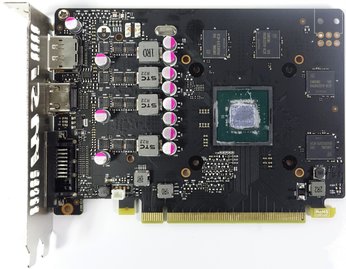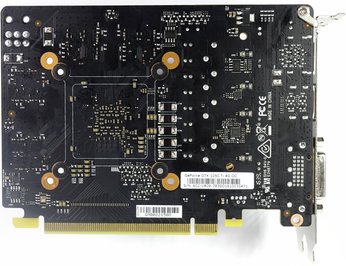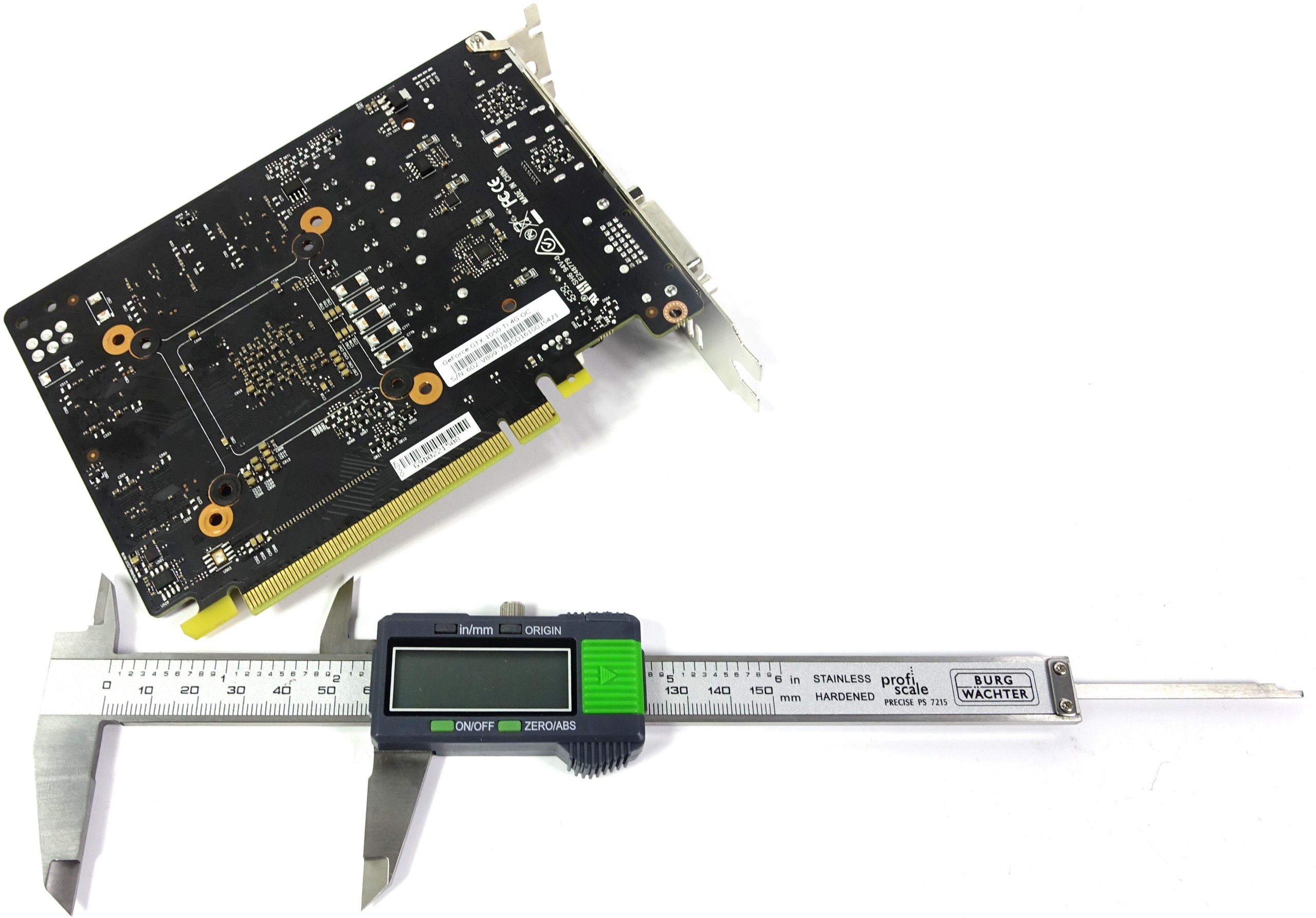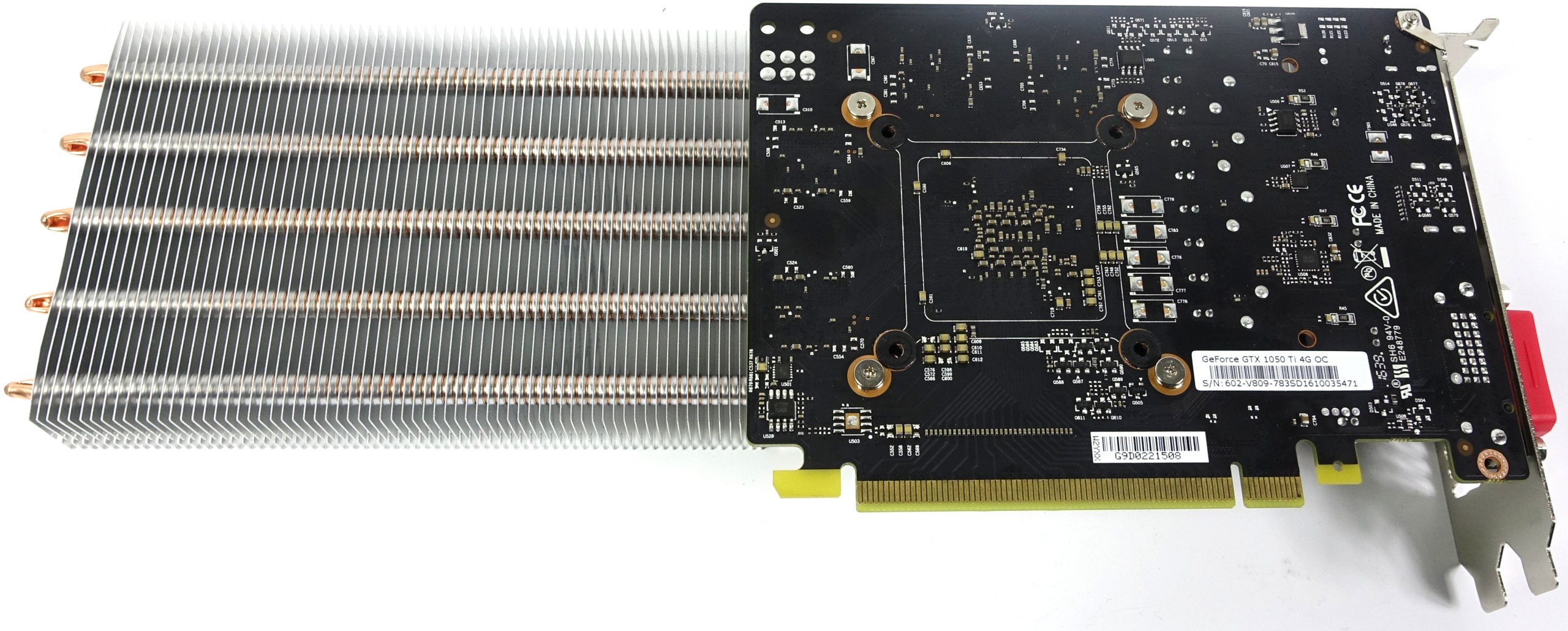Nvidia GeForce GTX 1050 Ti Passive Cooling Mod
Installing An Aftermarket Cooler


Let's get back to the 1050 Ti’s previously-mentioned mounting holes. If you read our story about the GeForce GTX 750 Ti, you know that we had to modify the distance between screws by several millimeters in order to find a compatible cooler. Now we're in the same regrettable situation because the 1050 Ti's original cooler has a similar grid of drilled holes measuring 48mm. Finding a third-party heat sink with that measurement probably isn't going to happen.
But wait! The MSI card presents a unique opportunity in that it sports a grid of four, unused holes measuring 58mm. This layout proves extremely convenient, since practically every cooler conforms to it. As a result, new life is breathed into the Arctic Accelero III that we planted on a Radeon R9 290 three years ago. If you want to replicate our results using another cooler, just bear in mind that there should be at least 15mm of space between the bottom of the heat sink and the fins to prevent contact between components like coils and capacitors.
The image below is notable because half of the cooler body is hanging off MSI's card. This setup allows for optimal airflow through the process of convection. It's also one of the reasons why passively-cooled cards should not be installed in a vertical configuration; heated air rises, after all. A graphics card pointed up and down would cause that air to spend more time in contact with the fins, creating inefficiency.
The short MSI card and longer cooler paint a beautiful picture together. All that's left now is installation, after which we can put these two components to work.
SummaryThe 48mm distance between screw holes presents an issue when it comes to compatible aftermarket coolers.There are several cards with unused screw holes in a 58mm grid configuration, one of which is the MSI board we're testing today.The longer the cooler, the more it will overhang the card's PCB, increasing airflow and cooling efficiency.
Get Tom's Hardware's best news and in-depth reviews, straight to your inbox.
Current page: Installing An Aftermarket Cooler
Prev Page GeForce GTX 1050 or GTX 1050 Ti? Next Page The Right Case & Placement
Igor Wallossek wrote a wide variety of hardware articles for Tom's Hardware, with a strong focus on technical analysis and in-depth reviews. His contributions have spanned a broad spectrum of PC components, including GPUs, CPUs, workstations, and PC builds. His insightful articles provide readers with detailed knowledge to make informed decisions in the ever-evolving tech landscape
-
AndrewJacksonZA Thank you for the really nice article Igor. It was an unexpected surprise and a pleasure to read. :-) Very interesting to read.Reply -
Poozle you know setting the fans to even minimal (20-30%) where you cant detect an audible difference would be safer and nearly as quiet... but I digressReply -
FormatC The problem is, that the marketing is telling us that it works. I ordered an original passive card directly from a manufacturer and will check it in a short follow-up. Without any airflow in the case this must fail ;)Reply -
AndrewJacksonZA Reply
It immediately reminded me of Sapphire's R9 Fury Tri-X:19136703 said:That giant cooler is so funny looking on that little card. :)
-
FormatC Same principle, but the used cooler is 4 years old.Reply
It seems that Sapphire copied the idea ;) -
thor220 It looks like the large tail of that Cooler isn't even doing anything. No point in making a passive cooler that big if it can't transfer the heat.Reply
I would much rather see a passive water cooled setup with no fans, only the pump. -
TJ Hooker Reply
What makes you say that? The heat pipes extend the length of the cooler, even the fins at the end should be absorbing and dissipating some of the heat.19139141 said:It looks like the large tail of that Cooler isn't even doing anything. No point in making a passive cooler that big if it can't transfer the heat.



